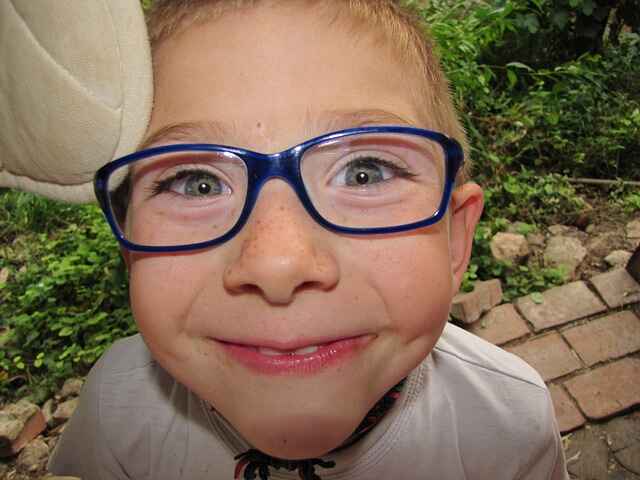Even if you haven’t experienced these conditions personally, you may have at least a vague sense of what they are. But as a parent, it’s important to be knowledgeable about the diseases your children can encounter. Here are 10 rare diseases affecting children today — their symptoms and treatments.
1. Batten Disease
Boys and girls are both affected by Batten Disease. Batten disease symptoms typically appear between the ages of 5 and 10 years old and include vision loss or seizures. There is a loss of muscle control and some brain tissue wasting over time. There is progressive vision loss and dementia. There is no cure or treatment available for Batten disease, and it is incurable. Death occurs almost always in the late teens or early twenties.

2. Duchenne Muscular Dystrophy
(DMD) is an inherited disorder that affects the use of voluntary muscles in the body, primarily affecting boys of all ethnic backgrounds. Normal development occurs initially, but between the ages of 2 and 6, the affected child may struggle to walk, run, or climb and may struggle to lift their head due to a weak neck. The heart and breathing muscles eventually become affected, resulting in difficulty breathing, fatigue, and heart problems due to an enlarged heart. Even with the best medical care, young men with DMD rarely live past their thirties.
3. Candle Syndrome
(Chronic Atypical Neutrophilic Dermatosis with Lipodystrophy and Elevated Temperature Syndrome) is an extremely uncommon auto-inflammatory disease. It is an inherited, genetic disorder. Patients experience recurring fevers that begin in infancy and last almost daily. They also have delayed development, skin rashes, and distinctive facial features such as thicker lips and swollen eyelids. Swelling around the eye sockets, clubbing of fingers and toes, and gradual liver enlargement occur in children. There is no effective therapeutic treatment for CANDLE syndrome, and life expectancy is reduced, with organ inflammation frequently resulting in death. The quality of life suffers as well.

4. Childhood Interstitial Lung Disease
It is a catch-all term for a group of rare lung diseases that can affect infants, children, and adolescents. The disease damages the tissues that surround the alveoli and bronchial tubes, as well as the air sacs and airways. Lung function is impaired, blood oxygen levels are low, and breathing is disrupted. The disease has only recently been studied, and it is unknown how many children have each type of child. The severity of the disease varies depending on the type, but it can result in death. There is no treatment.
Also Read: How to Boost Your Baby’s Brain Development
5. Ehlers-Danlos syndromes
They are a group of genetic disorders that share characteristics such as easy bruising, joint hypermobility, easily stretched skin, and tissue weakness. The severity of symptoms varies according to the form of the disorder, and treatment is tailored to the patient’s specific manifestations. The symptoms may also affect the autonomic nervous system, which is responsible for breathing and urination.
6. Ellis Van Creveld Syndrome
It is an inherited disorder caused by a chromosomal 4 error that is usually diagnosed at birth. Short stature, short forearms and legs, extra fingers and toes, narrow chest with short ribs, and malformed pelvis are all symptoms. A heart defect affects 50 to 60% of the population. Respiratory infections are common, and approximately half of those born with this syndrome die during infancy.
7. Gaucher Disease
It is an inherited storage disorder in which fatty substances accumulate to toxic levels in the spleen, liver, lungs, bone marrow, and occasionally in the brain. It is a genetic disorder that affects both boys and girls. Gaucher Type 2 symptoms appear in infancy, usually by 3 months, and these children rarely live past the age of three.
8. Krabbe Disease
It is divided into four subtypes, each of which begins at a different age. Type 1 is the most common and begins between the ages of 3 and 6 months. It affects nerve cells and causes nerve cell damage, resulting in muscle atrophy, increased muscle tone, back arching, and vision and hearing loss. Once the disease has taken hold, there is no cure or way to stop it, and babies with the Type 1 infantile form usually die by the age of 13 months.

9. Neuroblastoma
It is a rare and deadly childhood cancer with no known cause. It usually affects children under the age of five, and it can happen before a child is born, spreading to other parts of the body before any symptoms appear. Long-term survival for children with advanced disease over the age of 18 months is poor, and the majority of survivors have long-term effects from treatment.
Also Read: From Tumour to Triumph: Meet Lisa Connell, Mum With an Inoperable Brain Tumour
10. Pompe Disease
It is caused by an enzyme deficiency or lack, resulting in glycogen buildup, and has an infantile and late-onset form. The former usually manifests itself in the first few months of life, when babies have difficulty holding their heads up. The heart muscles deteriorate, causing the heart to enlarge and weaken. Infantile-form babies usually die before their first birthday due to heart failure and respiratory weakness. Source





